1st Parachute Battalion War Diary Appendix 3 Balloon Training Nov 1941
1st PARACHUTE BATTALION. WAR DIARY. APPX (3) COPY. 1 PBd/E/26.G SECRET. STANDING ORDERS FOR PARACHUTE DROPPING FROM BALLOON.
The Central Landing School was established at RAF Ringway airfield near Manchester on 21 June 1940 as a result of Prime Minister Churchill’s direction to create a corps of parachutists. It was initially commanded by Squadron Leader Louis A Strange RAF and designed primarily as a parachute training school and experimentation centre.
On 19 September the School was expanded into the Central Landing Establishment (CLE) RAF, divided into a Parachute Training school, a Technical unit and a Glider Training Squadron. The tasks were to train parachute troops, glider pilots and aircrew for airborne operations, develop the tactical handling of airborne troops, carry out technical research and recommend requirements. The Central Landing Establishment was renamed as the Airborne Forces Establishment in September 1941. Its Headquarters, Technical Development Unit and Experimental Flight were merged into the Airborne Forces Experimental Establishment in February 1942, and relocated to Sherburn-in-Elmet a few months later.
At the beginning of May 1941 Squadron Leader LA Strange was transferred to command a new unit known as Merchant Shipping Fighter Unit. The command of the School then passed to Squadron Leader Jack Benhem on 12 May 1941. Benham had worked along side Strange from the start. However a few weeks later Benhem applied to help form a similar parachute training school being created in India. On 9 July the command of PTS Ringway was offered to Squadron Leader Maurice Newnham. At the age of 44 took his first parachute jump in July 1941 and in the August formerly took over command of the School.
Which became known as Number 1 Parachute Training School, a self contained unit. Additional transport lift was provided by the RAF and expansions of the training establishment with Flying and Glider Training Schools took place to keep pace with the expansion of the 1st Airborne Division. Headquarters 38 Wing RAF was formed to coordinate increased army/air training and operational requirements.
Each RAF Parachute Jump Instructor (PJI) was in charge of a ‘stick’ of ten trainee parachutists at RAF Ringway. ‘Synthetic’ ground training was normally conducted in aircraft hangars using unconventional gymnastic-like apparatus to simulate the conditions a parachutist could expect to encounter from exiting the aircraft to flight and landing.
In one hangar there were mock-ups of the interior and jump-hole or door of all types of aircraft used for parachuting. The student was taught how to exit the aircraft.
In the other hangar were different types of ground equipment used to simulate landing. Trapeze swings simulated flight drills and students slid down chutes or jumped from platforms to practice parachute rolls on landing. The ‘Fan’, a platform apparatus 25-feet high, had a parachute harness connected to a ‘fan’ that used the body weight of the jumper to slow the rate of descent when he ‘jumped’ from the platform.
Certain devices such as the ‘Gallows’ and jumping from the backs of moving lorries to practice landings were discontinued due to excessive injury rates.
The parachute course lasted two to three weeks depending on weather. Up to two weeks ground training preceded the first two jumps made from a cage suspended beneath a tethered barrage balloon. Six to eight aircraft jumps followed, graduating from no equipment to full container load and one by night. The first parachute descent was made at Tatton Park on 13 July 1940.
Up to August 1941 the training capacity of the Parachute Dropping Squadron was 40 parachutists per week. This rose to 100 the following month until by September 1,365 aircraft descents were achieved. By the end of 1941 up to 4,000 training descents were completed.
After nearly 5 years of training the soldiers to parachute from aircraft, a farewell dinner was held at RAF Ringway in September 1945 before the PTS moved to RAF Upper Heyford in March 1946.
For further information on RAF Ringway and beyond. Visit https://ptsheritage.com/
Read More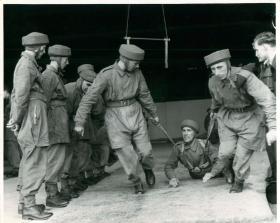
Drag training teaches trainee parachutists to release themselves from being dragged by parachute on the ground.
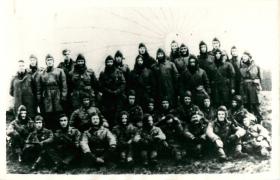
Group shot of X Troop prior to Operation Colossus raid.
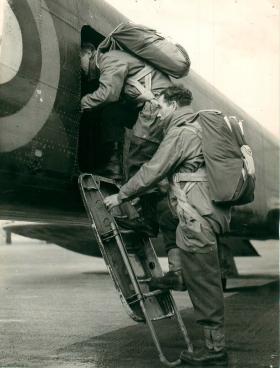
Paratroopers board a Whitley Bomber prior to a training exercise, 1940.
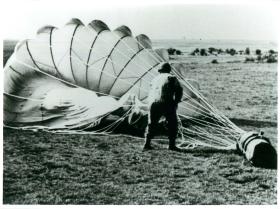
Recruit pulling in a parachute container after dropping, Ringway.
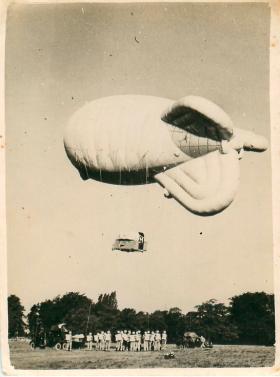
Parachute training using a barrage balloon at Ringway. This method of training was still used into the 1990s.
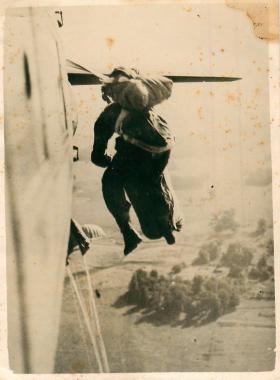
Shot of a parachute training descent with container immediately on exiting the aircraft over Tatton Park.
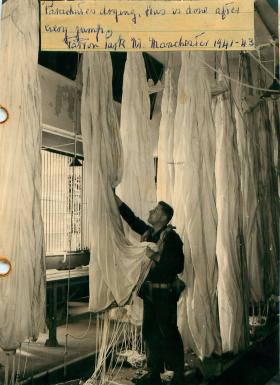
Parachutes drying at Tatton Park prior to being repacked.
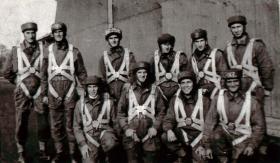
A Parachute course stick photographed during the early parachute training days with their harnesses and headwear on.
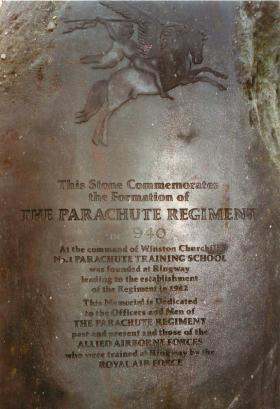
Stone commemorating the formation of the Parachute Regiment at Ringway.
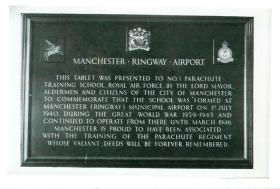
Tablet commemorating No. 1 Parachute Training School.
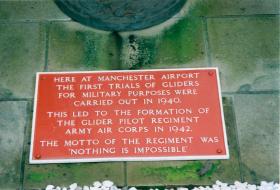
Stone commemorating the formation of the Glider Pilot Regiment.
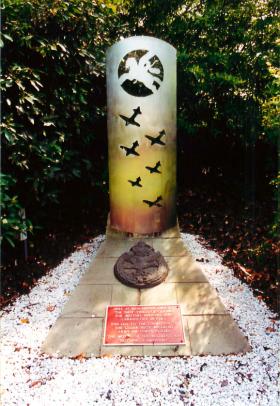
Glider Pilot Memorial, Manchester Airport
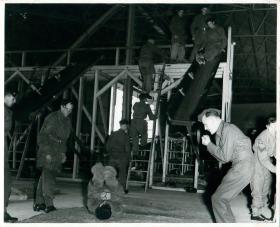
Recruits learn how to drop on ground training equipment at Ringway.
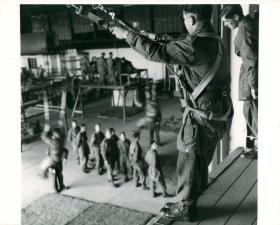
Recruit is just about to jump from a swing harness in a training building at Ringway.
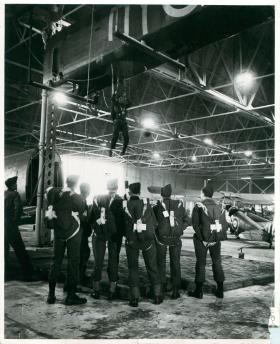
A recruit jumps from a fan trainer which simulates actual parachute landing speeds.
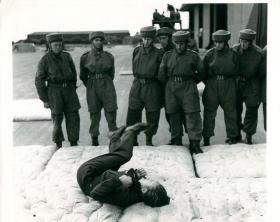
Very early shot of an instructor demonstrating the parachute roll to recruits at Ringway.
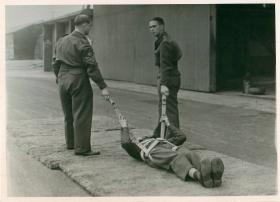
A recruit lies in a harness ready to be pulled in drag training.
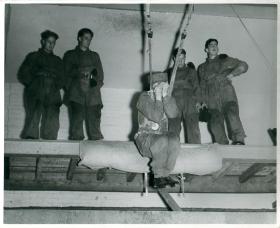
A Ringway recruit learns what action to take on striking a tree.
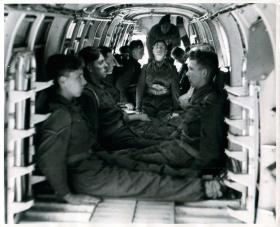
Recruits in a Whitley practise static drills for simulated aircraft exit. One is ready to drop.
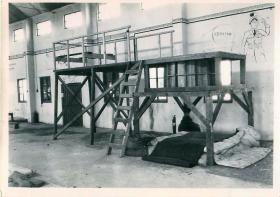
Wooden indoor ground training apparatus at Ringway.
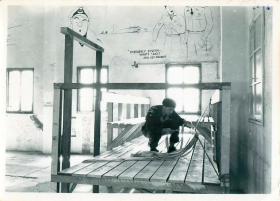
Indoor trainer at Ringway. Note the parachute related graffiti on the walls.
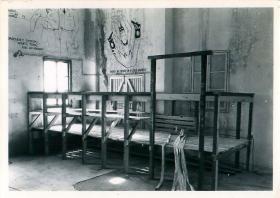
View from inside a parachute training hangar.
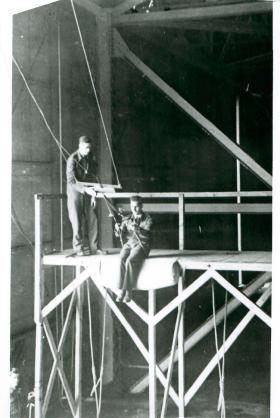
Recruit preparing to jump from a swing-style flight trainer at Ringway in 1943.
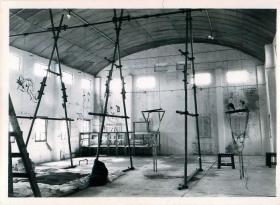
Shot of a parachute training hangar filled with swing harnesses and other equipment.
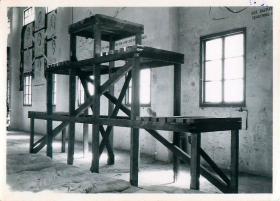
Wooden structure in hangar used to practise landing at various heights.
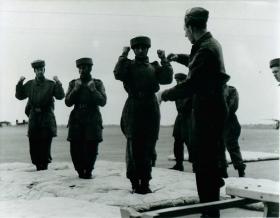
Instructor teaches three recruits the parachute roll on a soft surface.
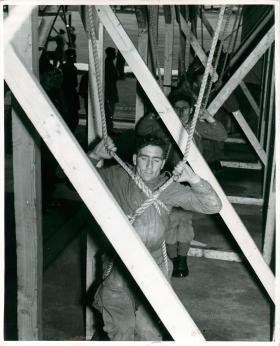
A recruit learns to steer a parachute in a flight trainer made of wood and rope.
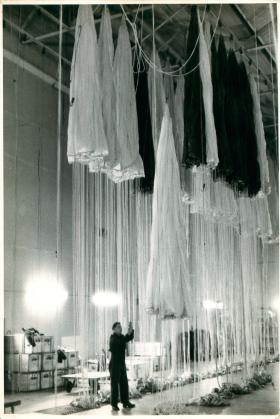
Several white parachutes in the drying hangar at Ringway.

WAAF members packing parachutes.
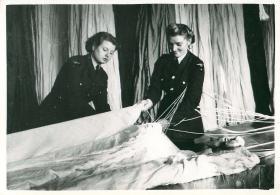
Two female parachute packers at work.
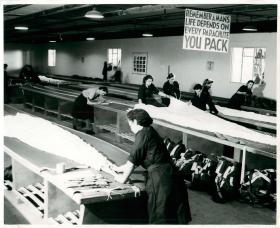
Women packing parachutes on long tables.
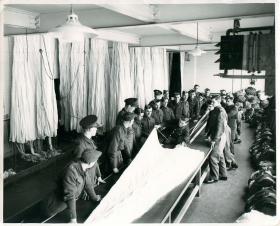
Course students are shown the parachute packing process, Ringway.
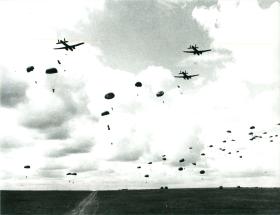
Possibly the first training fatality from a parachute failing to open (centre left).
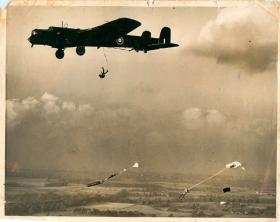
An acrobatic exit from a Whitley aircraft during a training jump.
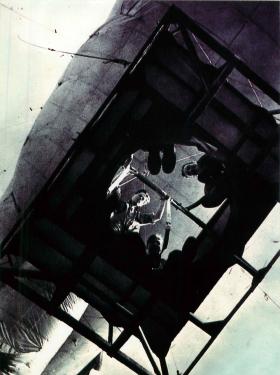
Balloon training to practise exiting through the floor.
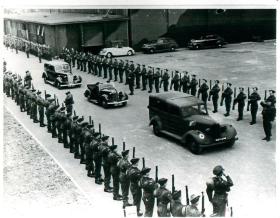
Winston Churchill's motorcade passes lines of soldiers on his visit to Ringway, April 1941.
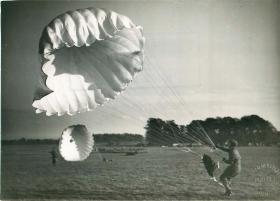
Recruit collapses his parachute after landing at Tatton Park.
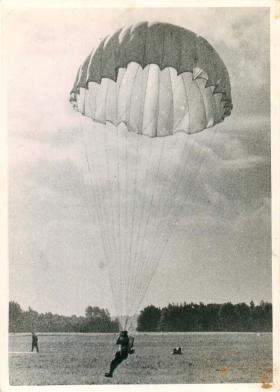
Recruit in training lands in parachute position.
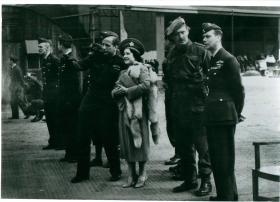
Visit to Ringway from Queen Elizabeth and King George VI.
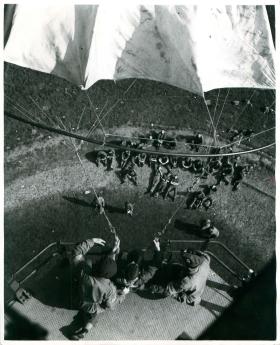
Recruit about to jump from a parachute tower possibly at Ringway.
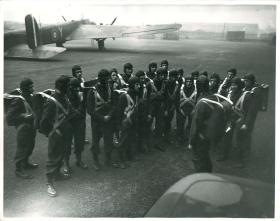
Equipped troops are briefed prior to training jumps from a Whitley aircraft.
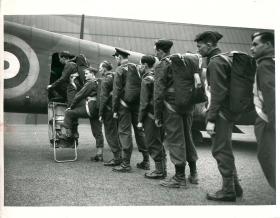
Troops emplaning for air familiarisation training before jumping.
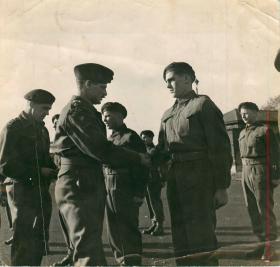
Men receive their parachute wings in a presentation on successful completion of their jump training.
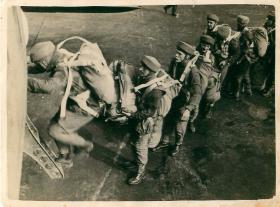
Recruits emplaning prior to a training jump at Ringway. Note number two is carrying his parachute container.
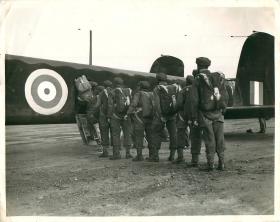
Men of 1st Parachute Battalion line up to emplane an aircraft.
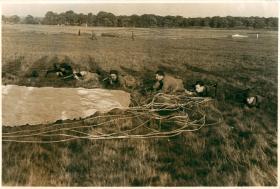
Posed photo of troops practising rallying on the drop zone.
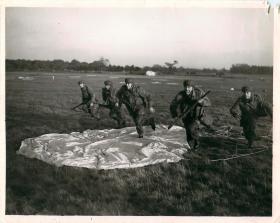
Posed photo of paratroopers ready for action after discarded their parachutes.
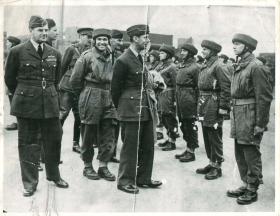
Brigadier Gale, King George VI and Major Dobie inspect troops at Ringway.
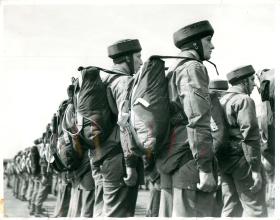
Members of an early parachute course assemble prior to an aircraft descent.
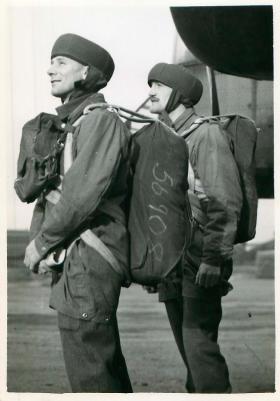
Posed shot of two equiped paratroopers ready to emplane.
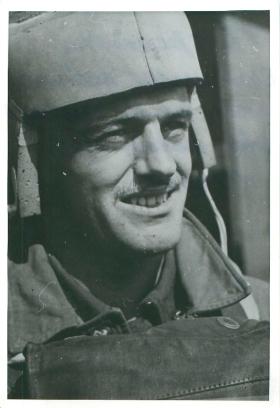
Early paratrooper wearing a specially constructed helmet.
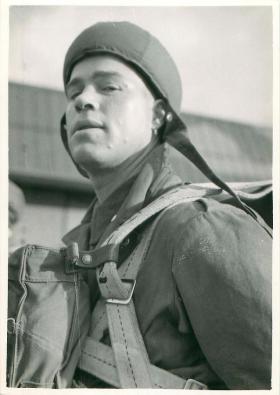
Early paratrooper looks at the camera prior to a training exercise.
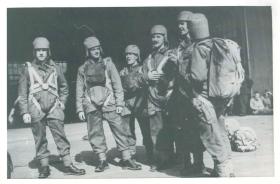
Line of paratroops showing the early parachute smock and experimental head protection.
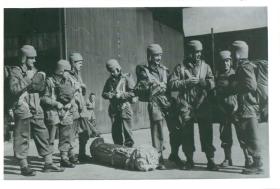
Photo shows an early weapons container which holds the stick's guns during the drop.
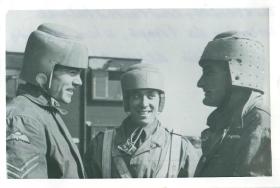
Three paratroopers wearing early experimental head protection.
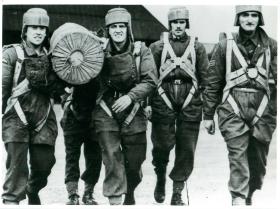
Four paratroopers carry a container to their aircraft ready for load in.
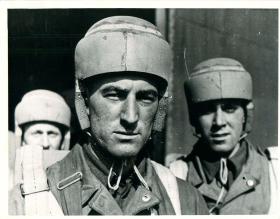
Early paratroopers wearing the locally manufactured rubber "Flash Gordon" helmet, c1940.
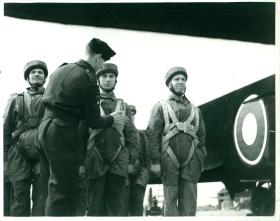
RAF jump instructor makes final checks of parachute harnesses prior to emplaning.
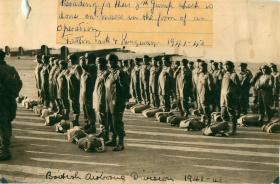
A parachute course assembles prior to a final descent which is done en masse.
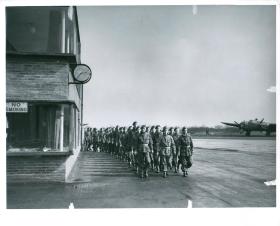
A later parachute course parade at Ringway. Notice the Wellington aircraft on the right.
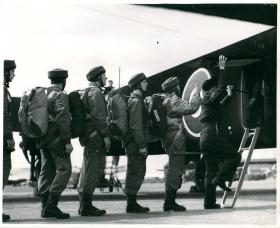
Paratroops recruits emplane for the first time.
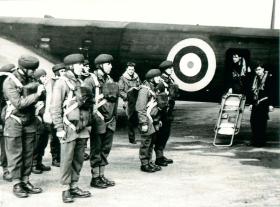
Early shot of men emplaning prior to parachute descent.
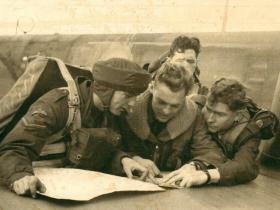
Details of the drop zone are briefed to troops with a map on an aircraft wing.
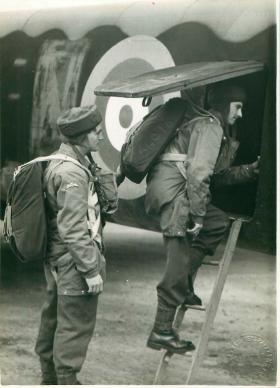
Paratroopers emplaning for a training exercise.
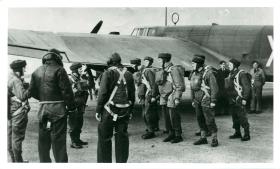
Numbering off of sticks prior to emplaning Whitley aircraft. Aircraft crew look on.
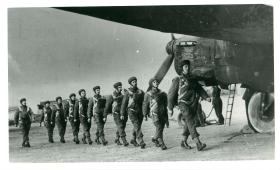
A stick of parachutists march in a line to emplane a Whitley aircraft.
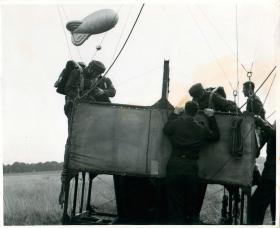
Parachute trainees climb into a balloon cage prior to a training jump.
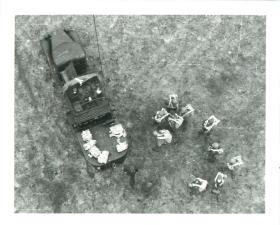
Shot from a raised balloon cage for training jumps. A parachute stick wait on the ground.
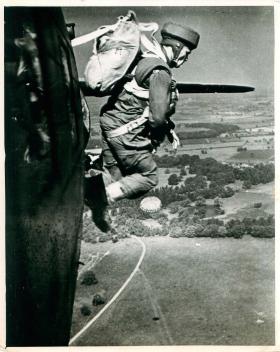
Early paratrooper adopts correct jumping position on exiting the aircraft over Tatton Park.
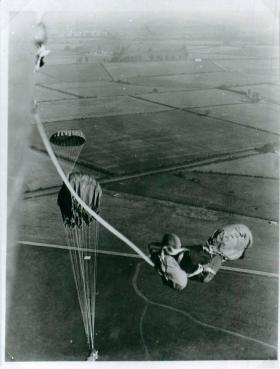
Paratrooper has just exited the aircraft. He holds a container and is attached to the plane by his release strop.
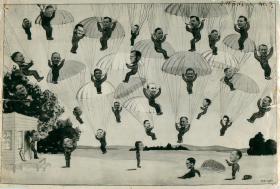
Cartoon of parachuting instructors and staff at Ringway, February 1944.
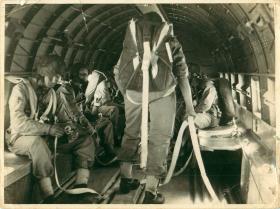
Paratroopers training in a Douglas Dakota aircraft. The strop is attached to the floor of the aircraft.
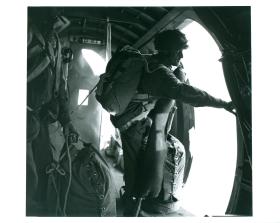
Number 1 of the stick stands in the door of a Dakota ready to jump.
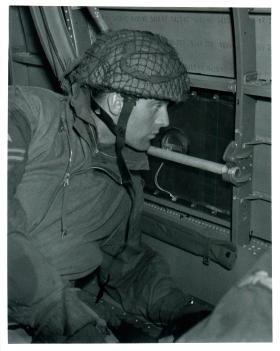
Paratrooper looks out a Douglas Dakota aircraft window for briefed landmarks on approaching the drop zone.
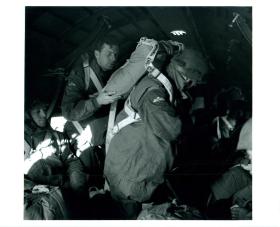
Paratroopers getting ready for training jumps out of a Douglas Dakota aircraft.
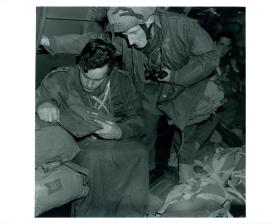
Last minute map check before training jump from a Douglas Dakota.
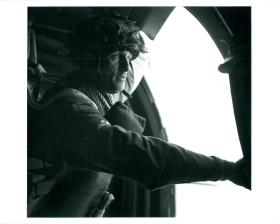
The first of a parachute stick waits for the green light before jumping from the aircraft.
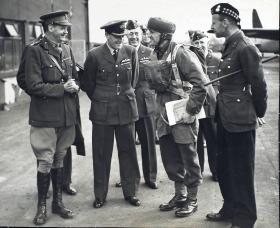
Brigadier Gale inspects the troops at Ringway, 1940
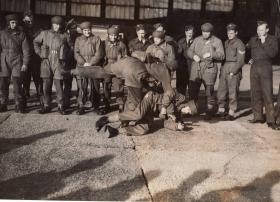
Men of No 2 Commando in unarmed combat training at Ringway
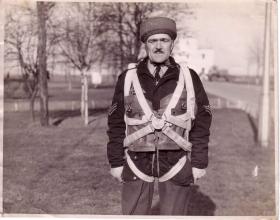
Sergeant Fred Stratton

Parachute training drop, Tatton Park
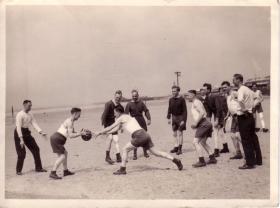
Injured personnel from Ringway exercising, Southport.
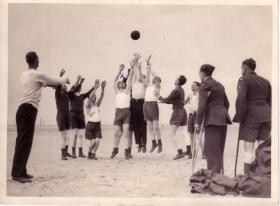
Injured personnel from Ringway exercising, Southport.
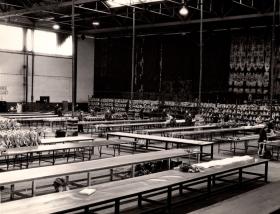
Parachute Storage
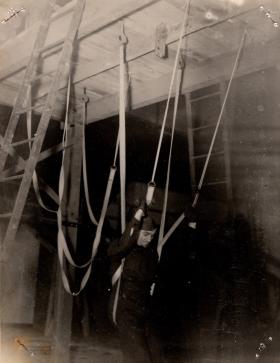
Training harness 1945
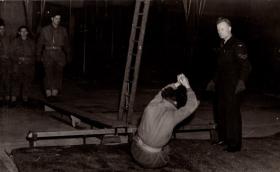
Training landing roll
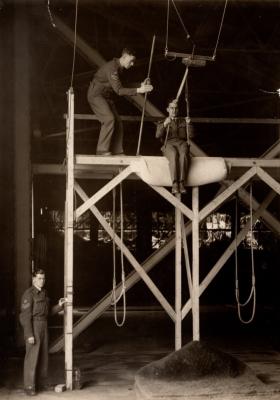
Training on swing 1942
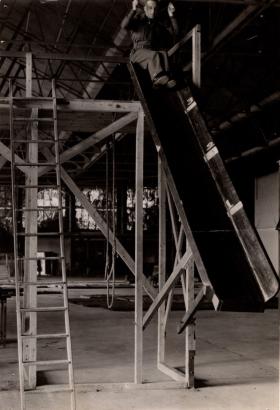
Training slide Dec 1942
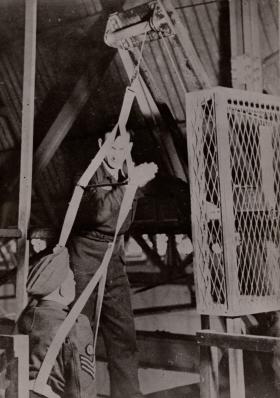
Training with harness
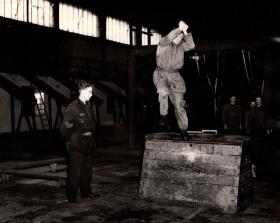
Training with wooden horse
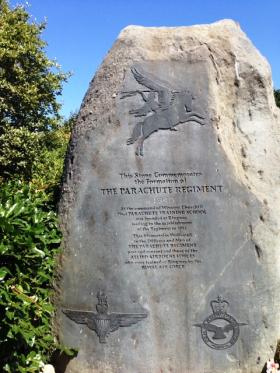
Parachute Regiment Monument at manchester Airport
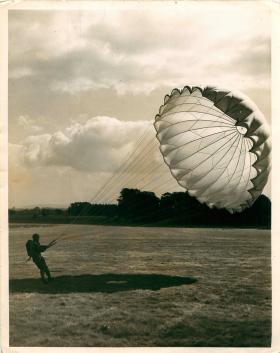
Parachute instructor lands and starts to collapse his parachute, Tatton Park, 1940-1
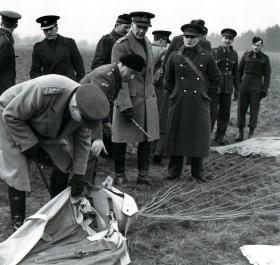
General Sir John Dill inspects a parachute with 11 SAS at Tatton Park December 1940
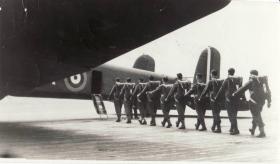
Stick of F Troop 11 SAS emplaning at Ringway, 1941
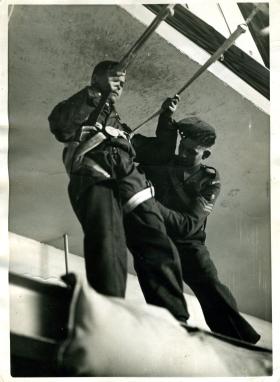
Parachute Jump Instructor conducting training at Ringway, 1941
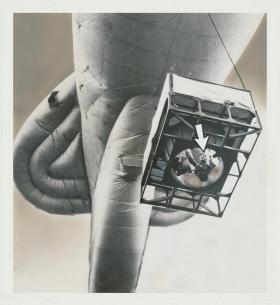
Photograph taken for the Chicago Tribune, probably RAF Ringway, 22 May 1941
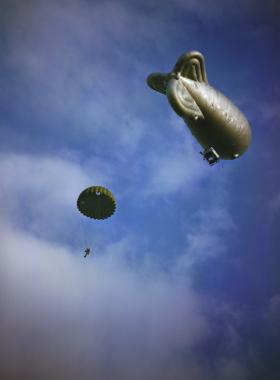
Balloon jump descent, 1942
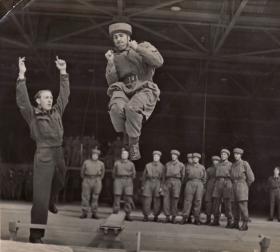
Jim Lund under instruction at Ringway, 1943
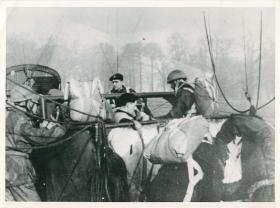
Men on balloon continuation training prior to Normandy and Arnhem, 1944
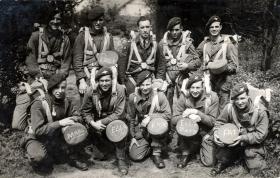
Men from a parachute course in 1945 pose for the camera with their girlfriend's names written on their hats.
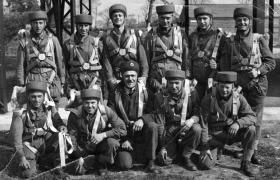
Sgt Stratton (centre) with a section of trainees from Course 161, RAF Ringway April 1945
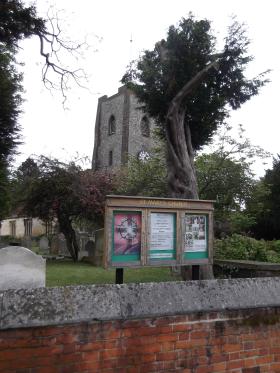
St Mary's Church, Walton on Thames, 2012.
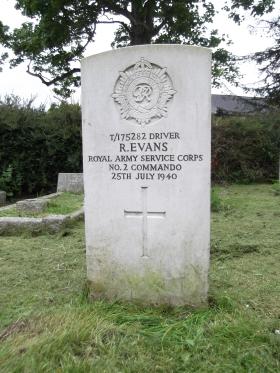
Driver Ralph Evans' Headstone, St Mary's Church, Walton on Thames, 2012.
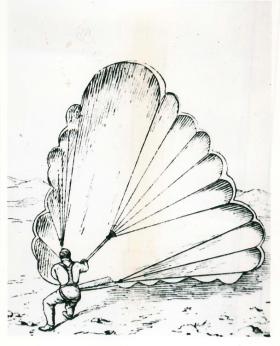
Instruction sketches for parachute training pamphlet.
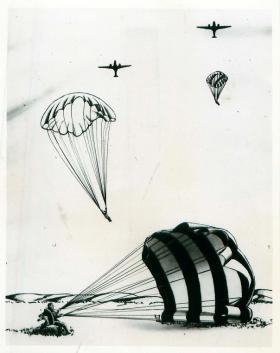
Instruction sketches for parachute training pamphlet.
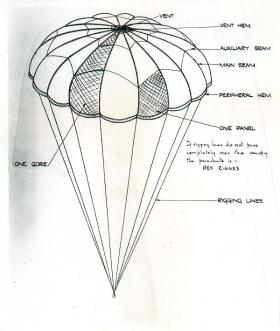
Instruction sketches for parachute training pamphlet.
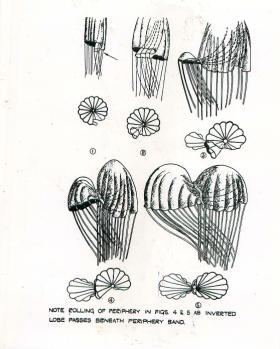
Instruction sketches for parachute training pamphlet.
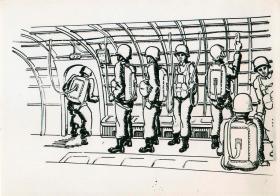
Instruction sketches for parachute training pamphlet.
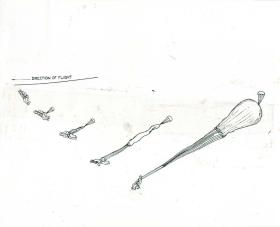
Instruction sketches for parachute training pamphlet.
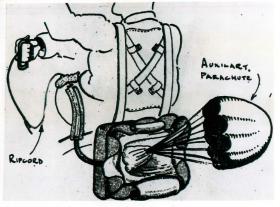
Instruction sketches for parachute training pamphlet.
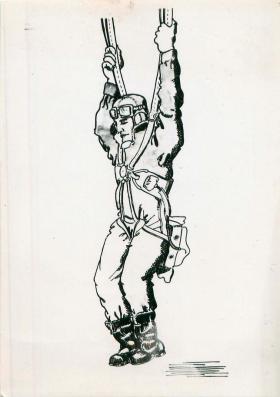
Instruction sketches for parachute training pamphlet.
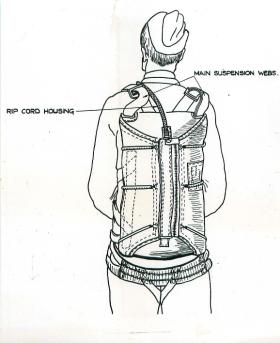
Instruction sketches for parachute training pamphlet.
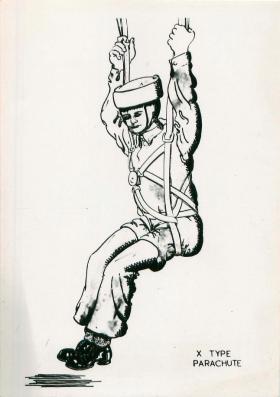
Instruction sketches for parachute training pamphlet, showing X-Type Parachute
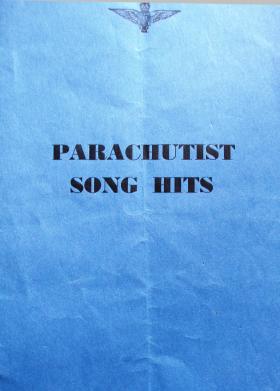
'Parachutist Song Hits' from Ringway
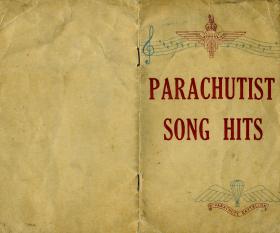
Parachutist Song Hits, 9th Parachute Battalion, 1946
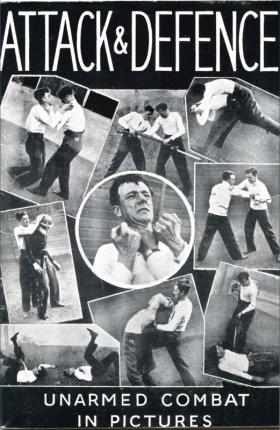
Sgt S David featured on book cover
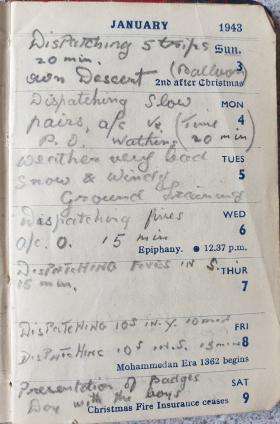
Extracts from a diary owned by Sgt S David
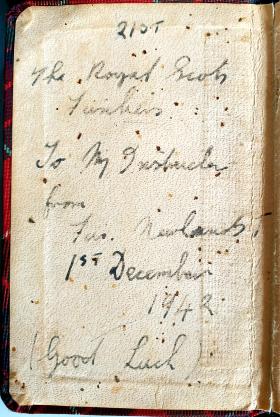
Signatures from men attended Parachute Course No 38, R.A.F. Ringway
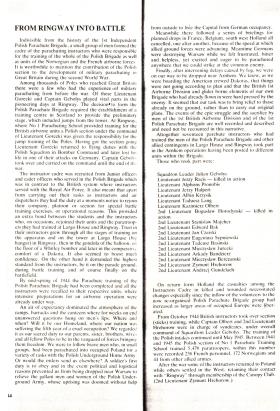
From Ringway into Battle
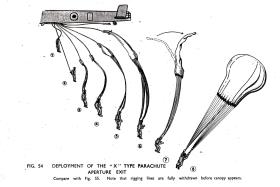
Deployment of the 'X' Type Parachute Aperture Exit
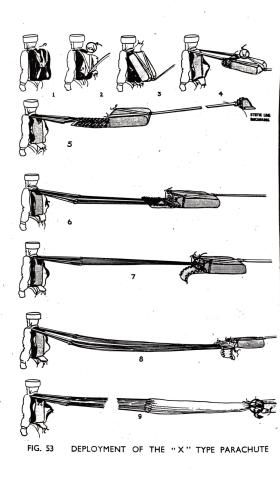
Deployment of the 'X' Type Parachute
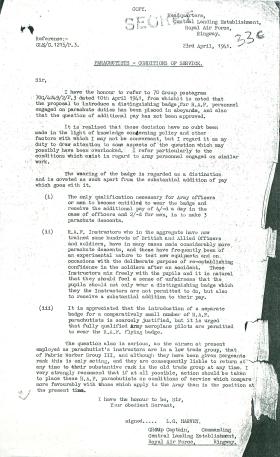
Letter from RAF Ringway about parachutists' conditions of service
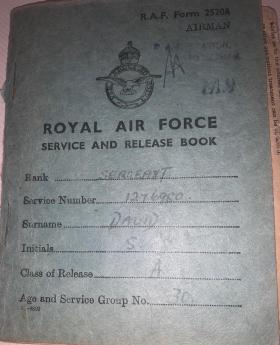
Front cover of service and release book for Sgt S David
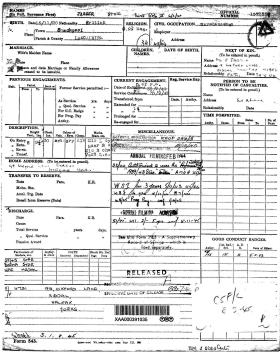
Frank Jagger RAF Service Records
Syllabus of Training RAF Ringway June 1944
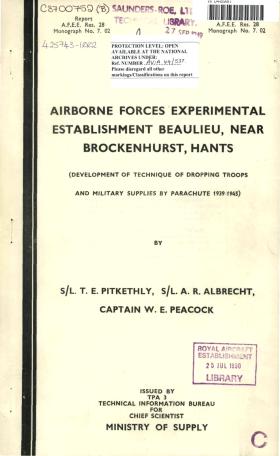
Development of technique of dropping troops and military supplies by parachute 1939-45
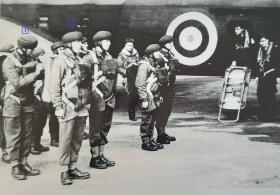
Men of the 1st Parachute Battalion parading in ‘stick’ order next to a Whitley at R.A.F. Ringway. Late 1941/early 1942.
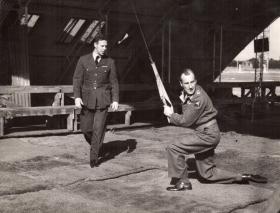
RAF Ringway 28 August 1945
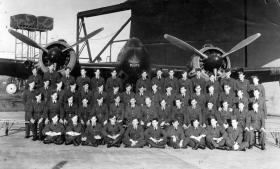
Servicing Wing No1 PTS Ringway

Servicing Wing PTS Ringway in front of a Dakota 17 Sept 1944
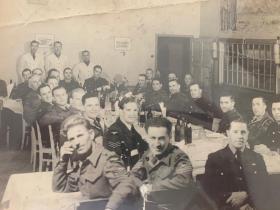
Mess Hall
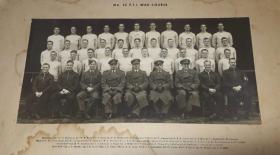
Members of No 33 PTI War Course
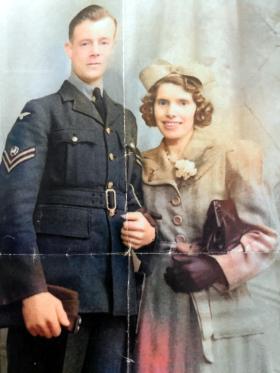
Sgt David with wife, Olive, colorized
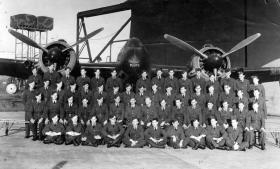
Servicing Wing No1 PTS Ringway in front of Beaufighter

Servicing Wing No1 PTS Ringway, 17 September 1944
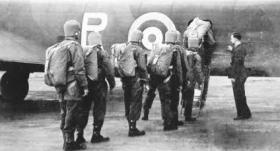
Recruits emplaning wearing 'Flash Gordon' helmets
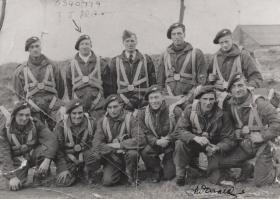
Ringway Course R154, 1945
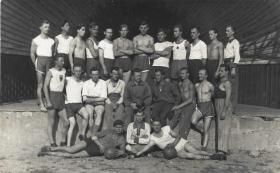
Polish airborne troops in training at RAF Ringway
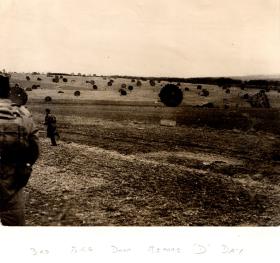
3rd Brigade drop before D Day 1944
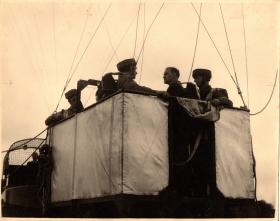
Balloon Cage 1942
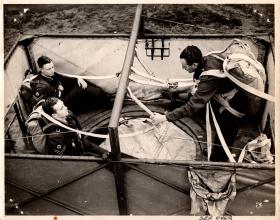
Balloon Cage 1943
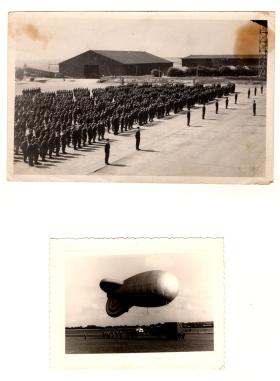
Balloon and recruits in formation at Ringway
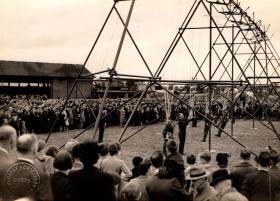
Open Day RAF Ringway 1945 parachute demonstration
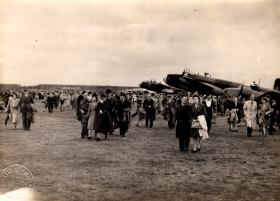
Ringway open day 1945
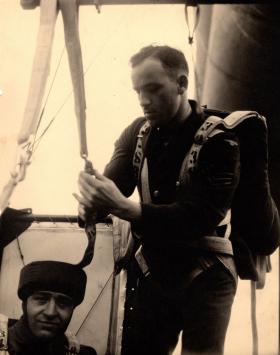
Monty Zeff 1942 in balloon RAF Ringway
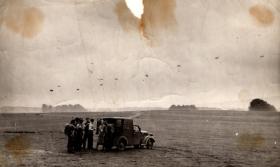
NAAFI Van 1942
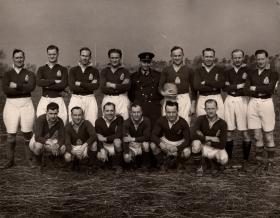
Ringway Rugby Team
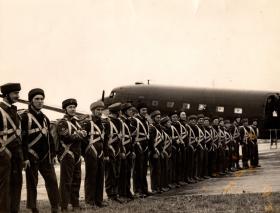
Instructors and pupils in line ready to board a Dakota
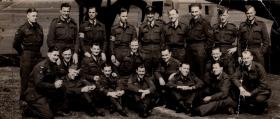
Jump Instructors RAF Ringway
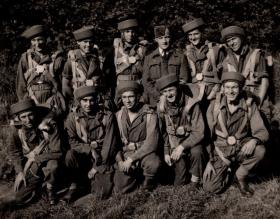
Paratrooper Recruits in Sorbo helmets
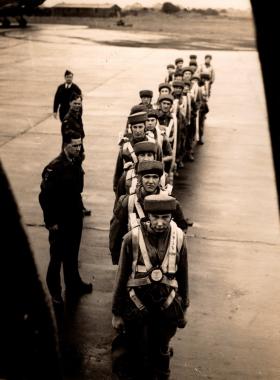
Pupils in line boarding a aircraft wearing sorbo helmets
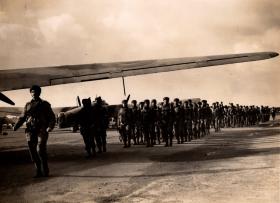
Pupils marching to aircraft
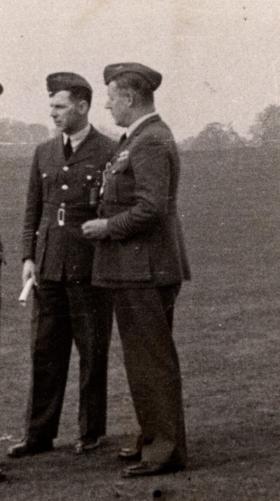
RAF Officers at Ringway
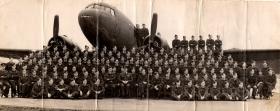
Jump Instructors at Ringway in front of Dakota
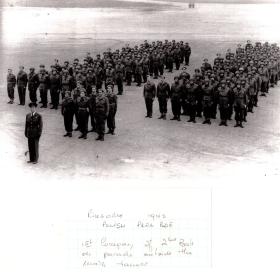
Ringway 1942 Polish Para Bde
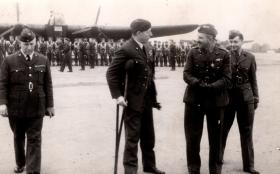
Sosabowski visiting Ringway
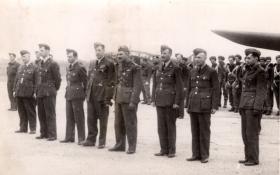
Sosabowski visiting RAF Ringway
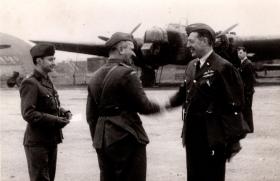
Sosabowski at RAF Ringway
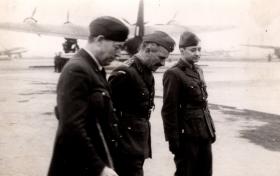
Sosabowski talking to officers at Ringway
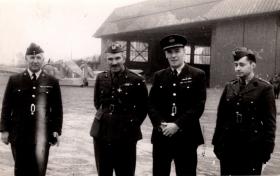
Sosabowski with senior officers at Ringway
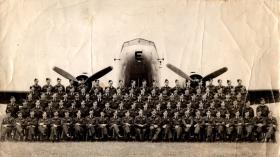
RAF in front of Dakota at RAF Ringway 1944/45
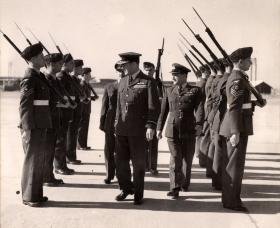
RAF Parade inspection from senior officers
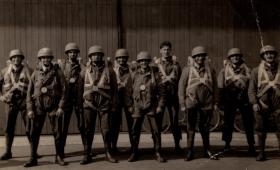
Jump Training 1942 at RAF Ringway
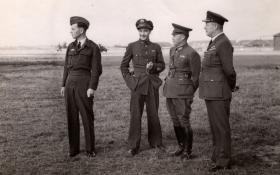
Officers of The Nationalist Chinese Forces at Ringway
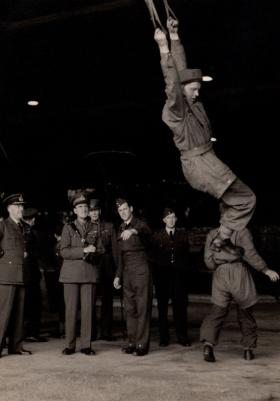
Training on swing in step in smock and sorbo
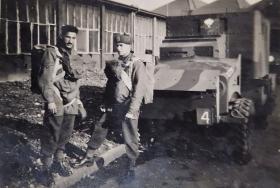
Bedford OXA improvised armoured car

Brigadier Gale and Lt Col Down inspect 1st Para Bn, Ringway, 1941
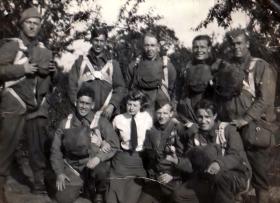
Small group photograph of a Stick at Ringway, 1941
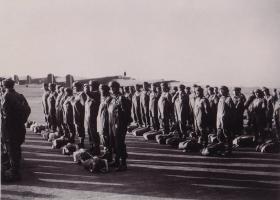
Members of 11 SAS Battalion at Ringway, 1941
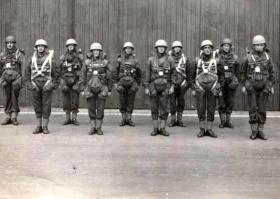
Capt Midwood and Polish Paras, Ringway 1943.
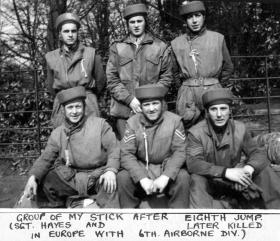
2nd Lt Harper, centre back, after his eighth parachute jump at Ringway, 1944
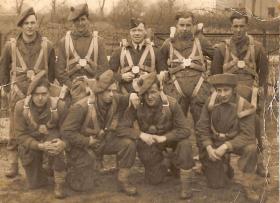
Section of trainees from a course, RAF Ringway, early 1945
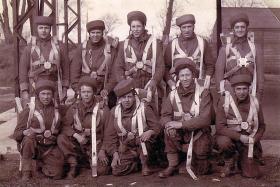
D 5 stick from Parachute course 154 RAF Ringway, March 1945.
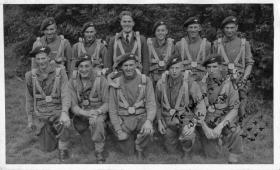
Group photo of a section on course B172 RAF Ringway, July 1945
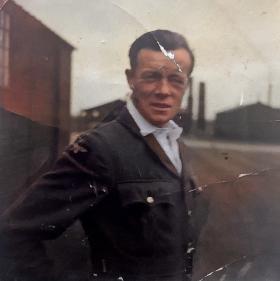
Sgt S David in RAF uniform colourized
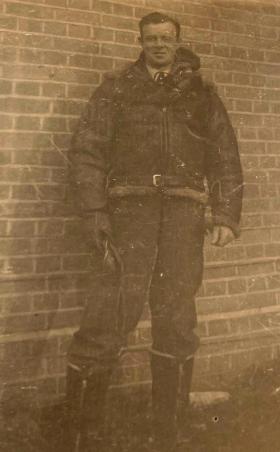
Sgt S David wearing flying jacket
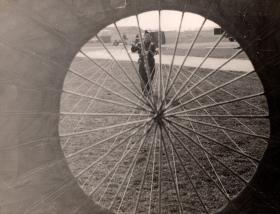
Bill Aldridge looks through a canopy
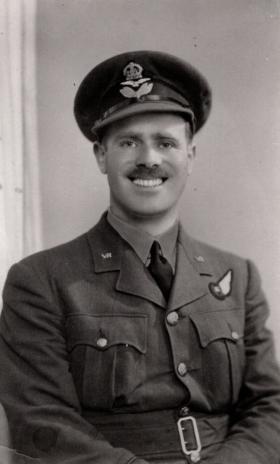
Bruce Williams - Parachutist 1934
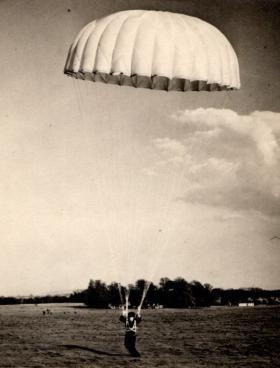
Parachute Jump landing
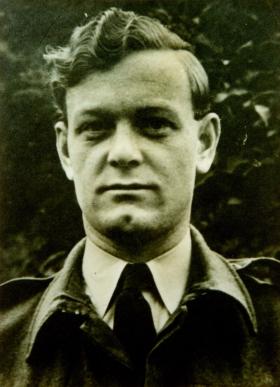
Gordon Steward
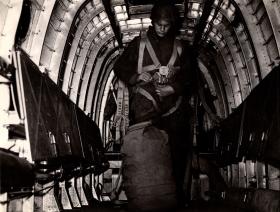
Paratrooper inside aircraft with kit bag
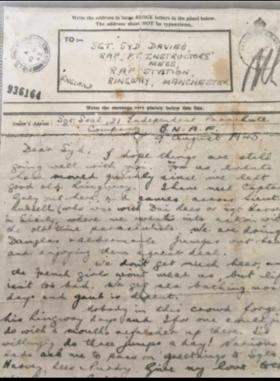
Letter to Sgt S David from Sgt Seal
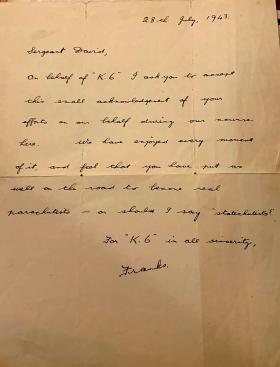
Letter from K6 to Sgt David 28 July 1943
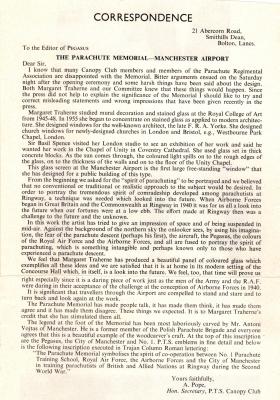
The Parachute Memorial Correspondence letter to The Pegasus Journal
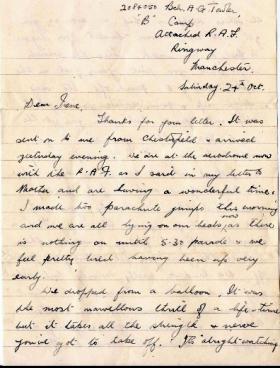
Bdr Towler's letter to his sister Irene, RAF Ringway, 24 Oct 1942.
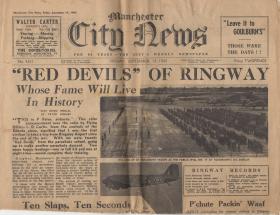
Manchester City News Sept 1945

Airsickness on the Ground
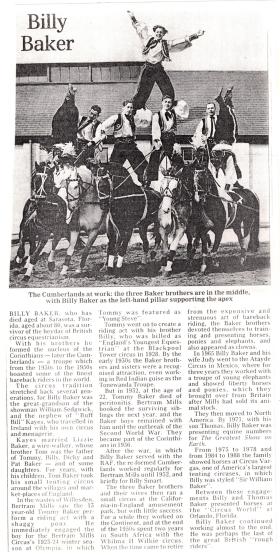
Billy Baker Newspaper Cutting
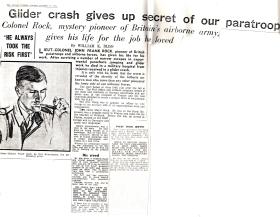
'Glider Crash Gives up Secret of our Paratroops'
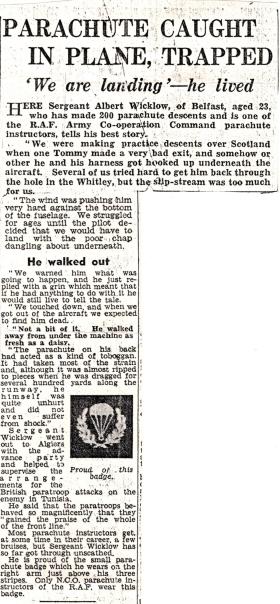
'Parachute Caught in Plane, Trapped' newspaper article
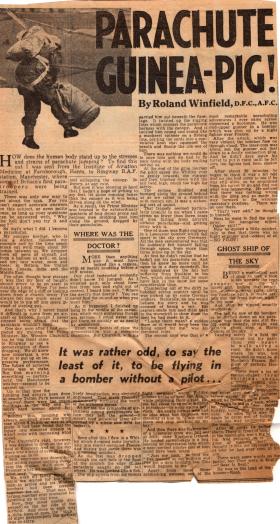
'Parachute Guinea-Pig' newspaper article
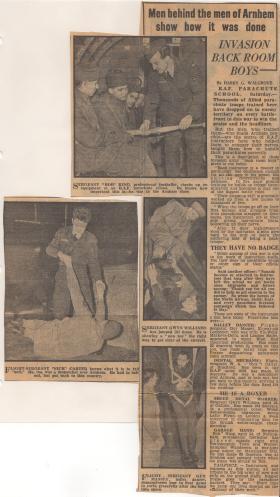
'Invasion Backroom Boys' Newspaper Article
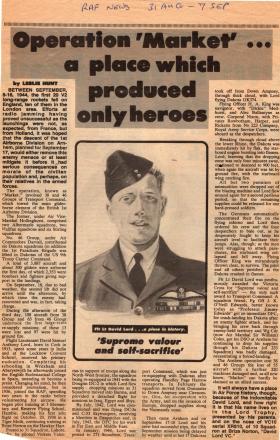
RAF News 31 Aug - 7 Sept
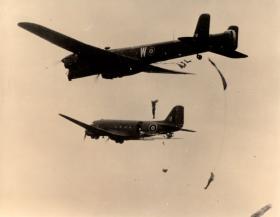
Parachute jump from Whitley and Dakota over Tatton Park
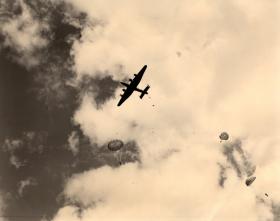
Parachute Jump tatton park
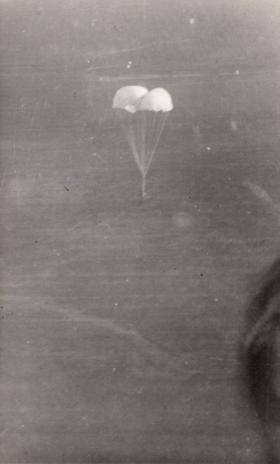
Canopy malfunction
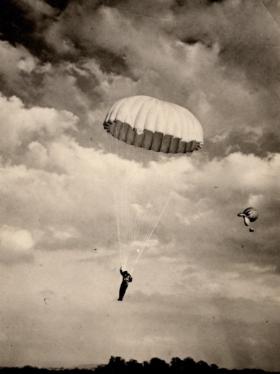
Parachute Jump
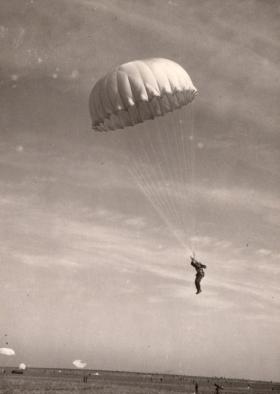
Parachute Jump Coming into land
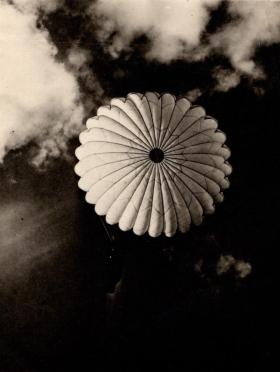
Check Canopy!
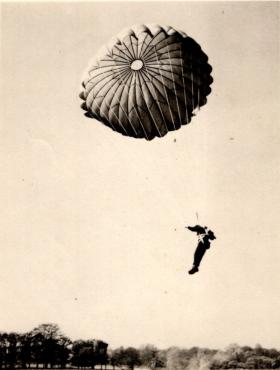
Legs together!
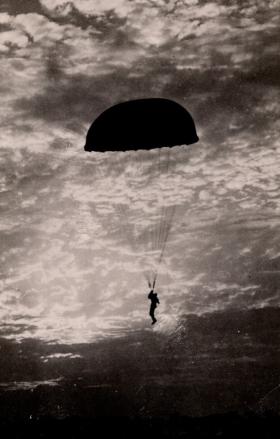
Parachute Jump at twilight
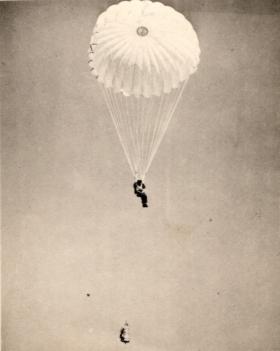
Parachute Jump with kit bag
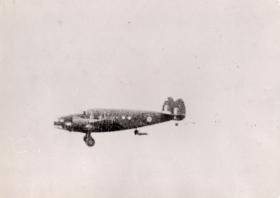
Jumping from Hudson
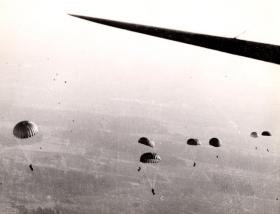
View from aircraft door
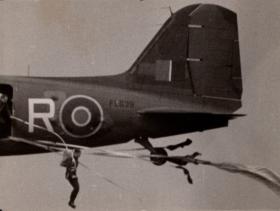
Parachute Jump from Dakota
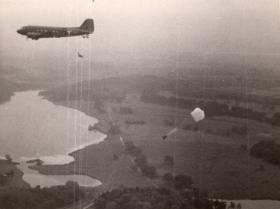
View of Dakota with paratroopers exiting
Make a donation to Airborne Assault ParaData to help preserve the history of The Parachute Regiment and Airborne Forces
The Airborne Shop is the official shop of Support Our Paras (The Parachute Regiment Charity RCN1131977).
Profits from all sales made through our shop go directly to Support Our Paras, so every purchase you make with us will directly benefit The Parachute Regiment and Airborne Forces.

Latest Comments
There are currently no comments for this content.
Add Comment
In order to add comments you must be registered with ParaData.
If you are currently a ParaData member please login.
If you are not currently a ParaData member but wish to get involved please register.